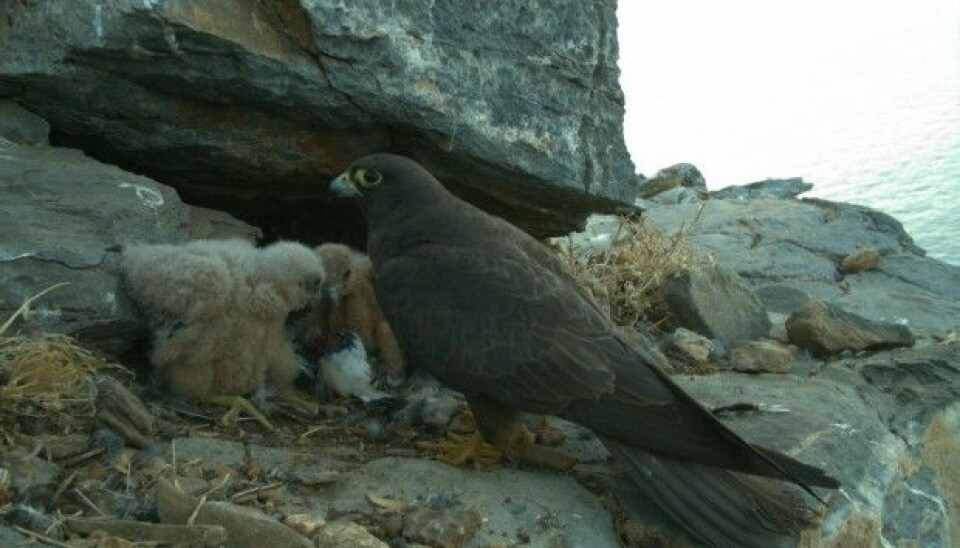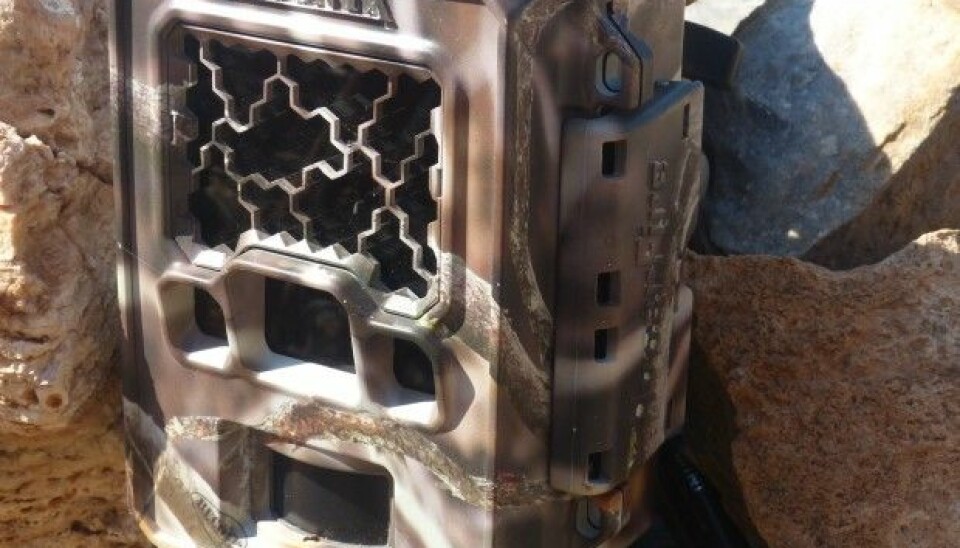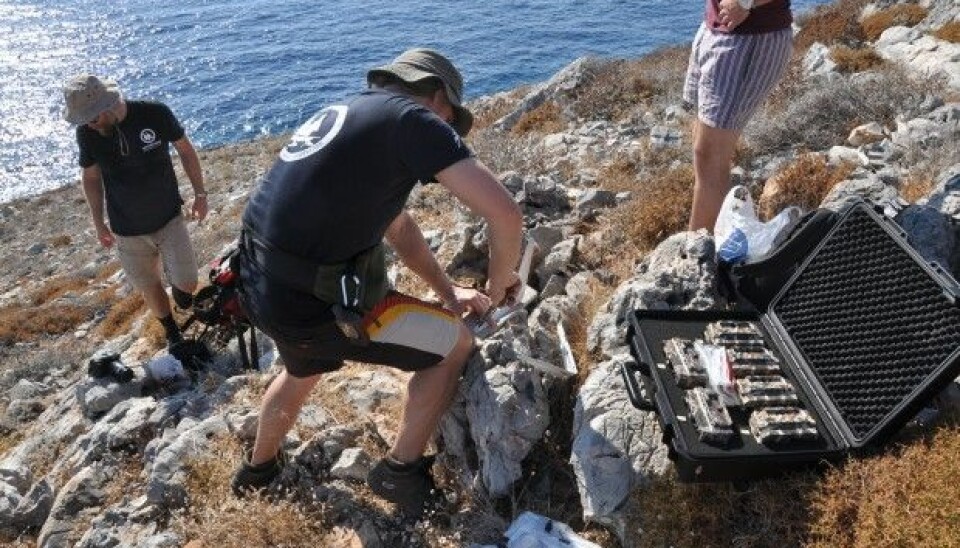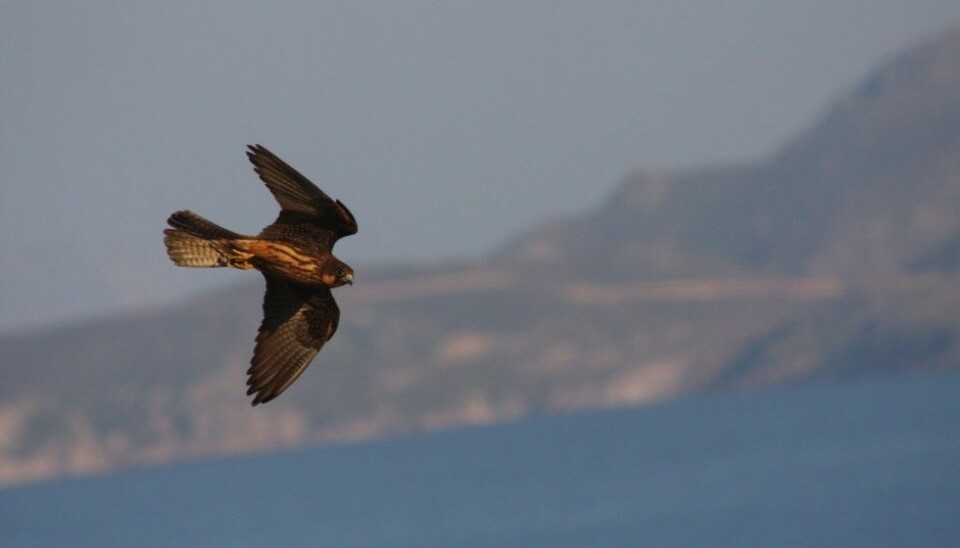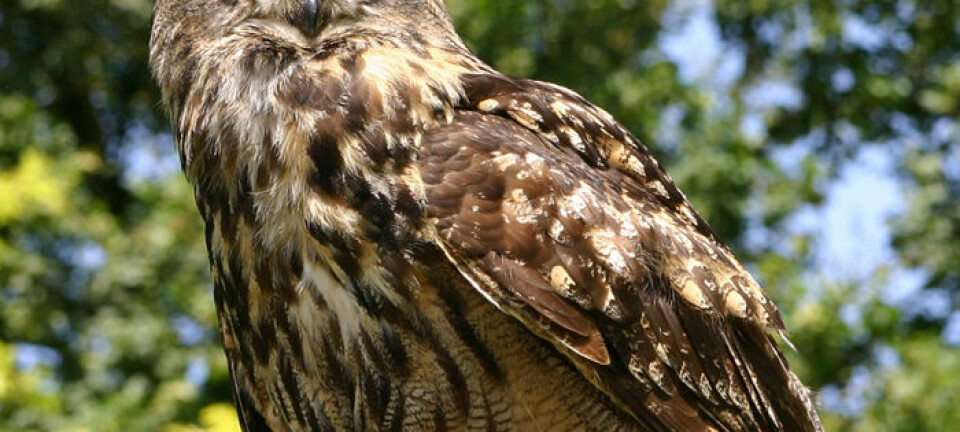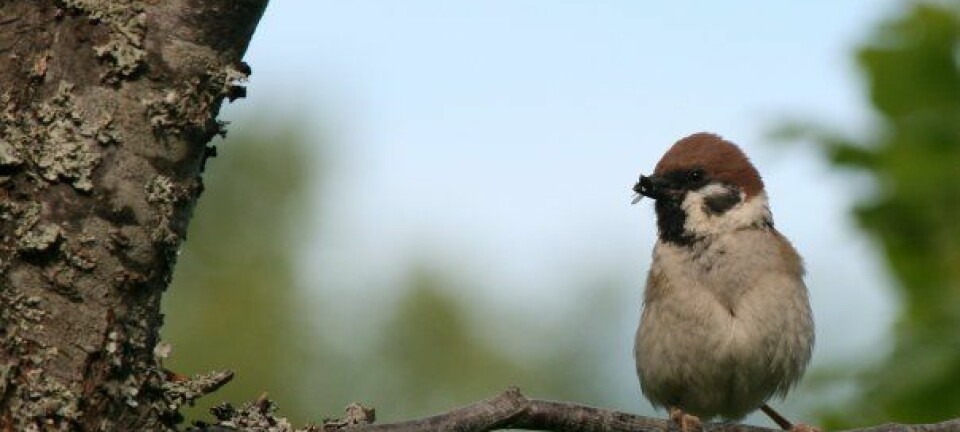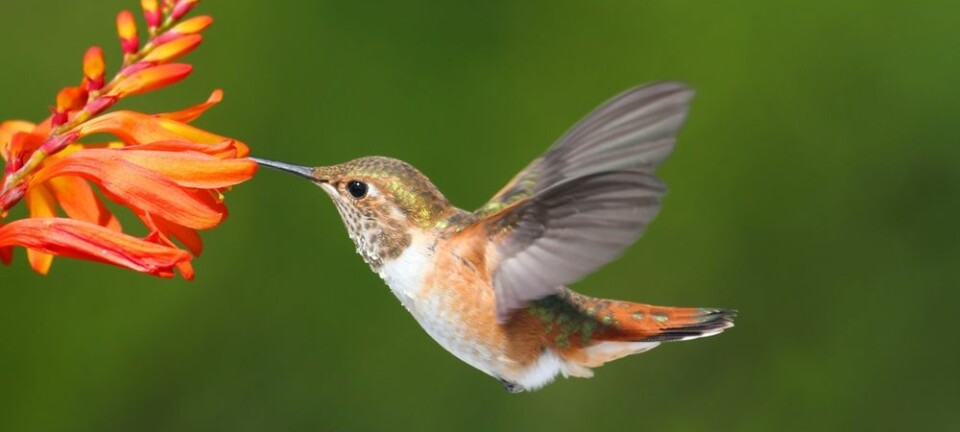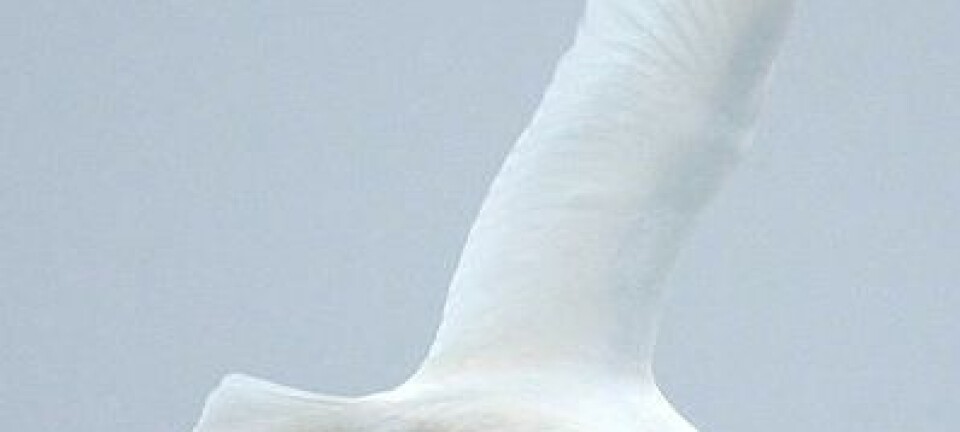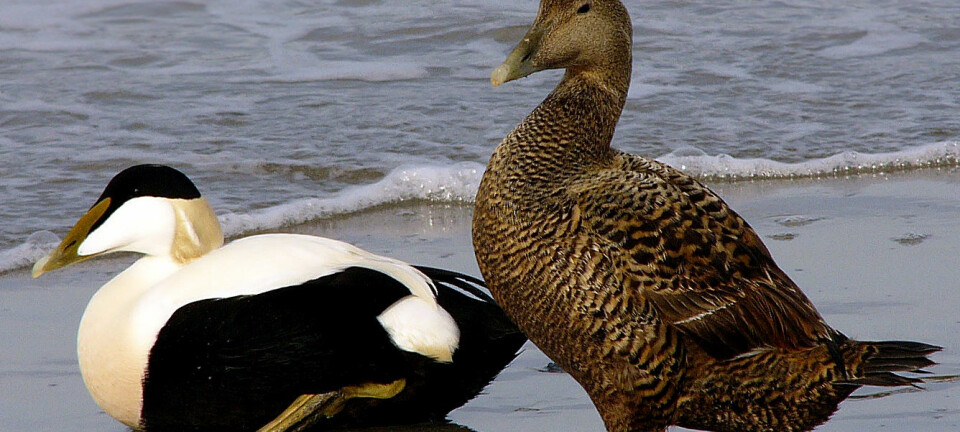Videos reveal the secrets of the Eleonora’s falcon
Every fall, Eleonora’s falcons nest by the Mediterranean, preying on migrant birds coming from the north. A Norwegian scientist has filmed the species over a long period to study the bird’s diet and activity.
Denne artikkelen er over ti år gammel og kan inneholde utdatert informasjon.
About four-fifths of the global population of Eleonora’s falcons (Falco eleonorae) nest in Greece. Their numbers have been in decline and the bird is considered a regional responsibility species in Greece. The Eleonora's falcon is also found on the International Union for Conservation of Nature’s Red List.
Ronny Steen, a senior engineer at the Norwegian University of Life Sciences (NMBU), has studied the birds on a rocky island in the Dodecanese archipelago in Greece. He has used cameras to study birds of prey in Norway for several years, and in 2010 he handed in his doctoral thesis in behavioural ecology about kestrels.
Now, with more than 1,000 hours of footage from a hidden camera, Steen, in cooperation with a Greek NGO called Archipelagos, has studied the behaviour and diet of the Eleonora’s falcon.
The study will probably be published in the first half of 2015.
Chance encounter
The Eleonora’s falcon is medium-sized and is known to cover long distances. It is 36-42 centimetres long, with a wingspan of 87-104 centimetres, according to Wikipedia. It captures and kills prey in the air, an act that can be quite spectacular to observe, according to Steen. The bird winters in Madagascar before nesting in the Mediterranean.
“This study will, hopefully, last for a significant period. We capture what the falcon eats on video. It is quite interesting, since very little research has been done on this topic. The use of cameras has made the investigation much easier,” Steen told forskning.no.
According to the IUCN Red List, the Eleonora’s falcon has been hunted by locals. In addition, in recent times, tourism disturbs the birds during the nesting process. Rats are a problem, and the species is also vulnerable to the development of wind power.
According to Steen, grazing animals destroy nests and vegetation that provide shade for Eleonora’s falcons. He wants to keep grazing animals away from important nesting areas in Greece during the birds' nesting period.
Archipelagos, the NGO Steen is working with, was founded in 1998. It is based on Samos, where it works to promote research on and conservation of biodiversity in Greece. The organization has succeeded in sharing knowledge on conservation issues with the Greek population.
“Archipelagos has made information posters and approached local media with information about the falcon,” says Steen. He hopes the monitoring project will grow and gain recognition.
Vacation turned into research
During Easter holidays in 2013, Steen was in Greece and attended a guided tour organized by Archipelagos. The guides were very interested in Steen’s experience and research methods, in particular the use of camera equipment. Steen says that the Eleonora’s falcon is interesting because it has a different biology than other birds of prey.
Therefore, he returned to Greece – with equipment – a few months later.
“I often visit researchers on my travels, and I am always on the lookout for species that are characteristic of the places I visit,” says Steen.
After the first research trip, Steen applied for funding for travel and equipment from The Nansen Fund. The application was successful, and he went back to Greece in September, carrying twelve cameras.
Steen wants to investigate what kind of migratory birds the falcon preys on, and what time of day it eats. He also measures the wind to see if weather conditions lead to a change in diet. He points out that there may be fewer migratory birds when there is little wind.
“The most important goal is to look at changes over time, if there are annual variations. Initially we might be talking about a decade,” says Steen.
A more common method
Steen says that in the 70s, scientists would camp out with binoculars to observe the bird. This was challenging, particularly in the heat of summer. The digital equipment makes it possible to capture hundreds of hours of video of the animal without being on site physically.
Steen has used film as a method of investigation since 2003. Since then, it has become more and more common.
“On-site observation can also affect bird behaviour,” says Steen.
Sometimes the falcon’s prey is quite damaged, making it difficult to identify the species. But with help from colleagues at NMBU, all of the prey in the video footage has been identified using both video and images.
Steen says that the current study is important to understand the biology of the falcon. Increased awareness of this species is crucial to show the locals how unique it is.
----------
Read the Norwegian version of this article at forskning.no
Translated by: Lars Nygaard









